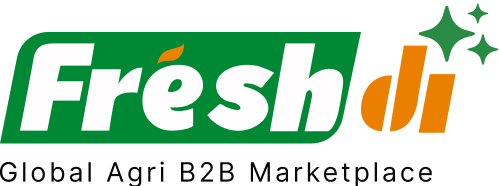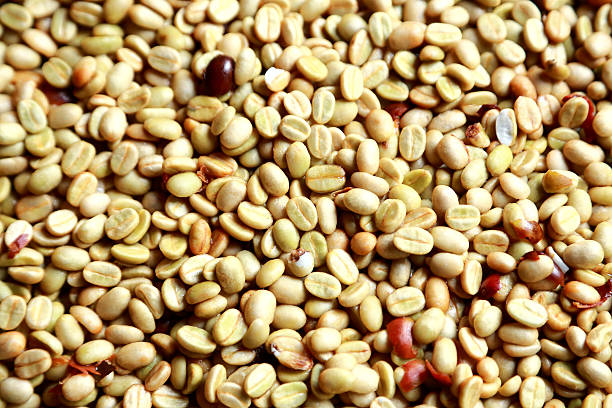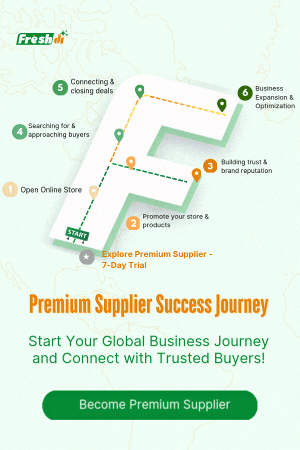Introduction – Current State of Play: The Green Coffee Sector in Malaysia
Malaysia’s green coffee market is heating up — and we’re not just talking about the roasting machines. Over the past year, this dynamic sector has seen a whirlwind of changes, from new regional trade agreements to a surge in specialty coffee culture. With shifts in global supply chains and rising consumer demand for sustainable products, the landscape is evolving quickly.
Whether you’re a café owner sourcing beans or a distributor looking to diversify, staying on top of these developments is crucial. And let’s be honest — in a market that’s moving this fast, if you’re not adapting, you’re falling behind.
Deep Dive – What’s Making Headlines? Key Recent News & Impacts
So, what’s really shaking things up in Malaysia’s green coffee scene? Here are some of the key developments:
-
Rising Demand for Specialty Beans: Thanks to Malaysia’s ever-growing café culture and home-brew enthusiasts, specialty green coffee is in high demand. People are no longer settling for average — they want unique flavor profiles and traceable origins.
-
Sustainability Front and Center: Ethical sourcing is no longer a buzzword — it’s a buying factor. Consumers want to know where their beans come from and how they were grown. Certifications like organic and fair-trade are becoming a must-have.
-
Tech is Brewing: From AI-driven coffee ordering apps to blockchain-based supply chains, tech is revolutionizing how green coffee is sourced, sold, and served.
-
Climate Uncertainty: On the flip side, climate change is threatening crop yields. Irregular weather patterns, pests, and diseases are becoming more common, adding unpredictability to the supply chain.
-
Malaysia’s Market is Growing — Fast: Valued at RM2.5 billion in 2024, projections suggest Malaysia’s coffee market could hit RM4 billion by 2030. That’s some serious growth potential right there.
All this means one thing: the race is on to secure reliable, high-quality green coffee suppliers who can keep up with these rapid changes.
Top 4 Verified Green Coffee Suppliers in Malaysia – Adapting to Today’s Market
Let’s cut to the chase. If you’re looking for top-tier green coffee suppliers in Malaysia this July 2025, here are the verified leaders standing out in this ever-changing market. This list is based on export history, global reach, certifications, and buyer reviews on platforms like Freshdi — a B2B sourcing site that helps buyers connect with vetted suppliers and track RFQ trends.
1. Mascellent Resources Sdn Bhd
This supplier is a powerhouse when it comes to green coffee exports. Known for its strict quality control and sustainable sourcing practices, Mascellent has been a favorite among buyers looking for traceable and ethically sourced beans.
- Strong sustainability certifications
- Excellent buyer reviews on Freshdi
- Known for consistent, premium-grade beans
2. NBC Food Industries SDN BHD
NBC Food Industries brings decades of experience to the table. Their wide distribution network and ability to adapt to changing demand patterns put them ahead of many competitors.
- Strong export track record
- Quick adaptation to specialty coffee trends
- Offers both bulk and niche varieties
3. Alpha Delta Food (M) Sdn Bhd
Alpha Delta Food is all about innovation. They’ve embraced digital tools and traceability systems to ensure transparency throughout their supply chain — a big win for today’s ethical buyers.
- Embraces tech and transparency
- Works directly with plantations in Southeast Asia
- Specializes in Arabica and Robusta green beans
4. Haco Asia Pacific Sdn Bhd
A well-known name in the global coffee trade, Haco Asia Pacific has leveraged its international experience to bring world-class practices to Malaysia. They’re especially strong in logistics and supply chain efficiency.
- Global logistics expertise
- Offers specialty and commercial-grade beans
- Strong compliance with international standards
Dynamic Ranking Note
Keep in mind that supplier performance isn’t static. On platforms like Freshdi, rankings can shift month to month. For example, “Suppliers of the Month” or “Top RFQ Responders” allow buyers to spot rising stars and new players making waves in the market.
Market Navigation – Strategic Responses to Today’s Green Coffee Landscape in Malaysia
So how should you, as a buyer or business owner, respond to all this change? Let’s break it down.
Immediate Opportunities
-
Specialty Coffee Surge: Now’s the time to double down on unique beans — think single-origin, micro-lots, or beans with interesting flavor notes. Consumers are looking for stories behind their sips.
-
Sustainability = Sales: If your supplier can’t show transparency or eco-certifications, you’re missing out on a big market segment. Invest in relationships with suppliers who align with these values.
-
Go Digital or Fall Behind: From placing RFQs online to tracking shipments in real time, digital tools are making green coffee sourcing faster and smarter. Platforms like Freshdi make it easier to compare suppliers and track market movements.
Challenges to Watch
-
Climate Volatility: Weather isn’t cooperating, and it’s hitting smallholder farms the hardest. That means price volatility, crop shortages, and unpredictable supply timelines.
-
Complex Supply Chains: With multiple touchpoints from farm to port, maintaining traceability isn’t a walk in the park. But it’s increasingly non-negotiable.
-
Regulatory Headaches: From import/export rules to food safety standards, staying compliant is a full-time job. Work with suppliers who are already ahead of the curve here.
Smart Sourcing Strategies
-
Diversify Your Sources: Don’t put all your beans in one basket. Work with multiple suppliers across different regions to buffer against climate and geopolitical risks.
-
Build Direct Relationships: The closer you are to the farmer, the better. Direct trade offers better transparency, pricing, and quality control.
-
Certify and Verify: Look for third-party certifications (Fair Trade, Rainforest Alliance, etc.) and use platforms like Freshdi to verify supplier credentials and past performance.
Short-Term Outlook
Expect growth — and lots of it. With the café boom in full swing and coffee tourism on the rise, Malaysia is gearing up to become a regional hub for green coffee. Regions like Sabah and Sarawak are seeing increased investment in local farming, while urban centers are embracing AI and automation in coffee retail.
Conclusion – Key Takeaways for Businesses in a Rapidly Evolving Market
The green coffee market in Malaysia is buzzing with opportunity — but only for those who can keep up. With rising demand for specialty and sustainable beans, tech-led sourcing, and growing global interest, there’s never been a better time to invest in this market.
But it’s not without its challenges. Climate change, regulatory barriers, and supply chain complexity mean that smart sourcing is more critical than ever.
That’s why platforms like Freshdi are a game-changer. They offer:
- Real-time market insights
- Verified supplier directories
- Alerts on RFQ trends tied to current events
- Tools to build and manage supplier relationships
In a nutshell: if you want to thrive in Malaysia’s green coffee market, stay informed, stay agile, and stay connected.
Checklist for Green Coffee Buyers in Malaysia – July 2025
- ✅ Verify supplier certifications for sustainability and quality
- ✅ Use digital platforms like Freshdi to monitor RFQs and supplier activity
- ✅ Diversify your sourcing regions (don’t rely on one origin!)
- ✅ Prioritize specialty and ethically sourced beans to meet consumer demand
- ✅ Stay updated on climate and trade news impacting supply chains
Future Outlook – What’s Brewing by 2026?
Looking ahead, expect to see:
- More automation in sourcing and café operations
- Greater focus on traceability, with blockchain and IoT integration
- Increased collaboration between farmers and roasters
- Expansion of coffee farming in East Malaysia
- Rising demand for cold brew and ready-to-drink formats requiring specialty beans
Malaysia isn’t just catching up — it’s setting the pace for green coffee innovation in Southeast Asia.
How Freshdi Empowers Buyers
Freshdi isn’t just a directory — it’s a powerful decision-making tool. Here’s what it brings to your sourcing strategy:
- Curated supplier profiles with verified data
- Dynamic rankings based on recent RFQ activity
- Notifications on changing market conditions and supplier performance
- Tools to compare offers and negotiate directly
- A central hub for managing all your sourcing needs
Want to stay ahead in the green coffee game? Make Freshdi your go-to resource.
FAQs
1. What is green coffee, and how is it different from roasted coffee?
Green coffee refers to unroasted coffee beans. They’re the raw product exported by producers and roasted later for consumption. Roasting brings out the flavor, but green beans are what you’ll need to source if you’re in the coffee trade.
2. Why is Malaysia becoming a hotspot for green coffee trade?
Malaysia’s growing café culture, rising specialty coffee demand, and strategic trade location make it a key player in the regional coffee supply chain.
3. How do I verify a supplier’s credibility in Malaysia?
Use platforms like Freshdi to check supplier certifications, past buyer reviews, and RFQ response history.
4. What types of green coffee are most in demand in 2025?
Specialty Arabica beans with traceable origins and sustainability certifications are topping the charts this year.
5. How can I protect my business from climate-related supply disruptions?
Diversify sourcing regions, build direct relationships with farmers, and stay informed about climate impacts through platforms that track market trends and risks, like Freshdi.
Stay caffeinated — and stay competitive.


